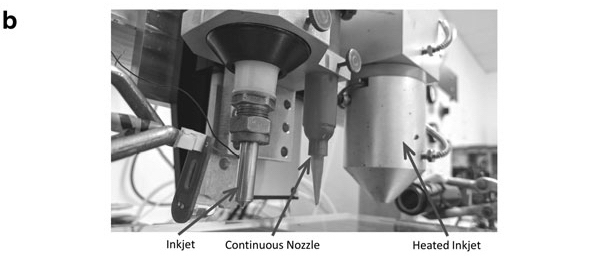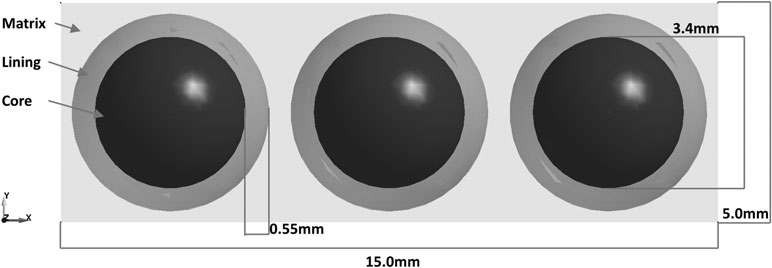Research led by Professor Paul Curtis of Imperial College London and the UK’s Defence Science and Technology Laboratory, presents a 3D printer configured for multimaterial fabrication. The research is available in the latest edition of the 3D Printing and Additive Manufacturing journal.
The 3D printer is capable of working with up to three different materials, allowing open experimentation with low-melting point alloys, 3D printable elastomers, and resins.
The system was designed as an inexpensive alternative to commercially available multimaterial 3D printers, such as the Stratasys Connex range. The scientists say that 3D printers with a high price tag discourage the experimentation with new materials such as solder alloys and ceramics.

Merging direct metal writing with inkjet technology
The custom 3D printer configuration is a system of three print heads, one inkjet for using inks at room temperature, one continuous nozzle for resin deposition and curing, and a final heated inkjet head.

Proving the capabilities of this custom 3D printer was achieved through the fabrication of a locally resonant metamaterial (LRM) – researched for its ability to reduce unwanted noise and vibration. The LRM designed by researchers takes the shape of a rectangular cell containing three metallic cores.

The outer shell of the LRM cell is made from Permabond UV625 resin. The resin cures to a stiff, durable, and transparent material under UV light, once deposited by the continuous nozzle. To this, the first inkjet head adds a layer of silicone at room temperature. The metal core, a composition of tin, silver and copper, is then added by the heated inkjet head, and the subsequent layers are repeated to form a seal around the core.

An additional challenge to multimaterial 3D printing is the ability to simultaneously control the paths of multiple print heads. In order to achieve this the researchers developed a specialized program called LabVIEW, that enables 3D printer function in 6 different states – idle through to 3D printing of an object.
In one of these states, a user can test a new material to see how it deposits on the bed by using three predefined structures; a single line, a circle, and cylinder. In a further state, LabVIEW enables the user to generate 3D printing co-ordinates for an uploaded .stl file. These co-ordinates can then be changed in necessary, and the file is sent to print.
Achievements in a multimaterial world
The 3D printer and software system developed at Imperial College London exhibits promising potential for future development. In the study’s conclusion co-authors state,
As future work, alternative materials will be used in the heated inkjet to allow normal droplet creation and alternative composite designs can be explored to examine how well the printer can cope with more irregular geometry. In addition, further development of the geometry processing method is needed to allow the user to upload a single STL file and for the program to recognize the different material components in the multimaterial object.
Introducing a Multimaterial Printer for the Deposition of Low Melting Point Alloys, Elastomer, and Ultraviolet Curable Resin is published open-access in 3D Printing and Additive Manufacturing journal vol. 4 issue 2, edited by Skylar Tibbits, director and founder of MIT’s Self-Assembly Lab that specializes in 4D printing. The article is co-authored by Irfan Raza, Lorenzo Iannucci and Paul T. Curtis.
Other metamaterial research recently reported by 3D Printing Industry includes the blueprint for a medium that expands under pressure, multi jet printed bricks capable of bending sound, and FDM printed copper meta materials developed at Duke University.
Stay up-to-date with the latest 3D printing news and research by subscribing to our newsletter and following us on twitter and Facebook.
Featured image: The triple nozzle set up of Imperial College London’s custom 3D printer. Photo by Irfan Raza



